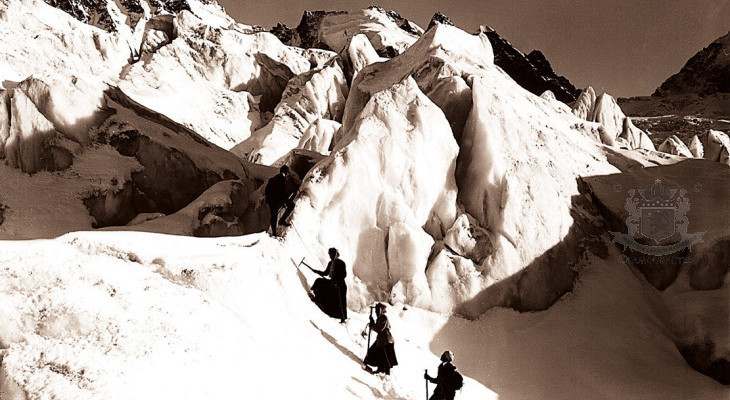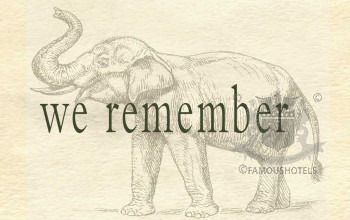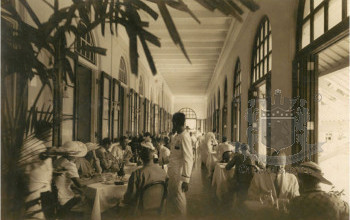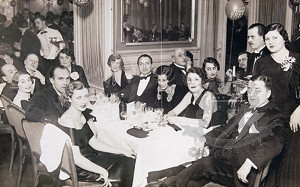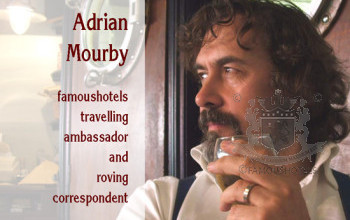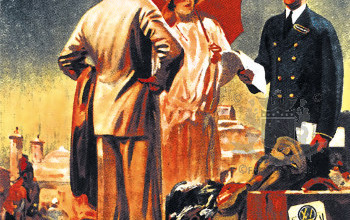Above the Clouds the Sun is always shining: Pontresina’s Kronenhof
( words)
Above the Clouds the Sun always shines or Wintering in the Alps
by Andreas Augustin
Switzerland is famous for exporting talented hoteliers all over the globe, in return the country is known for having some of the most legendary hotels on the planet.
Let's start with the Engadine, a mountain region at 1,800-3,000m.
It inspired Hemingway (1899–1961) to say: "Switzerland is a small, steep country much more up and down than sideways, and is all stuck over with large brown hotels built in the cuckoo clock style of architecture." ("Toronto Star Weekly", March 1922).
St. Moritz and Pontresina represent the social heart of the region. They share the highest airport in Europe – Engadine Airport Samedan, where only visual approaches are permitted. Grand hotels await the traveller all over the place, perching on top of the hills like pristine early ocean liners or, better still, old palaces.
In 1896 an hotelier named Caspar Badrutt even decided to call his hotel "Palace". This, by the way, was the first Palace hotel in the world. The Palace in question is NOT a cuckoo clock, but rather a "Big Ben" – it has a tower.
Back in 1998 we made our way to Pontresina, where the Grand Hotel Kronenhof awaited us. Its former manager Xaver Stocker had called us in to record the history of this fine old establishment.I always fondly recall our days at the Kronenhof. It has such a family friendly atmosphere that we even brought the children. They both skied all day long on the slopes of Pontresina. The Diavolezza, Bernina and Lagalb areas are a magical winter wonderland.
Photographer Bill Lorenz accompanied us and shot some of his most remarkable work in hotel documentary photography. Upon starting our research, we were led into a small room in the oldest part of the house, dating back to 1849. 'These are the archives,' Stocker proudly announced.
Stacks of old photographs, guest books and historic documents like drawings greeted us. We dove into the material and were at once driven back to the days of the 1850s, when a few men in this region realised that a new breed of travellers, called tourists, was seeking the kind of accommodation worth staying in for more than one hasty night.
Over the decades the Palace, the Kulm (both in St Moritz) and the Kronenhof, the grand old lady of Pontresina, developed into grand alpine hotels. The Kronenhof was the first of them all. A small boarding house with only three rooms in 1849, it became the Gasthof (inn) zur Krone-Post. Historic details can be found all over the house.All guest records are still kept in the archives of the Kronenhof. Hence, we know that there were 14 guests in the first year, 11 Germans and ‘other’ nationalities, and three English guests. One of them was a certain F. Hugh who brought his dog Flip (to give you an idea of the sort of archives we found!).
Pre-eminent among the myths of St. Moritz is the tale of how, through a bet with some English friends, Caspar's father Johannes Badrutt (at the Hotel Kulm) reputedly "invented" the concept of wintering in the Alps. One summer day, the legend goes, he was asked what they did up here in the rough mountain climate during winter when it was all ice and snow for months on end. 'In winter,' he replied, 'it's sometimes so sunny and warm that we wear short sleeves.' 'Not true', the Englishman laughed, a foggy London winter day in mind. 'I bet you. If it's not true, I will pay for your stay.' Winter arrived. When the skeptic Brits arrived to bright sunshine, they found that they had packed everything one needed for cold winter days: pullovers, sweaters and gloves. But one essential item was missing: sun glasses! Thus, the winter season was born and guests from all over Europe soon flocked to the mountain destination.
As mankind needs games, skiing, skating and curling were invented. St Moritz knew what it owed the British and American guests and invented The Cresta, an ice run, three quarters of a mile long. The first rider to adopt the now traditional head-first position was a British subject, a Mr Cornish, in the 1887 Grand National. Riders brake using the rakes on their boots and if they are out of control they are certain to go out at Shuttlecock, the most famous corner of the Run. Fallers at Shuttlecock (providing they survived) automatically become members of the Shuttlecock Club and are entitled to wear a Shuttlecock tie. It's that sort of game.
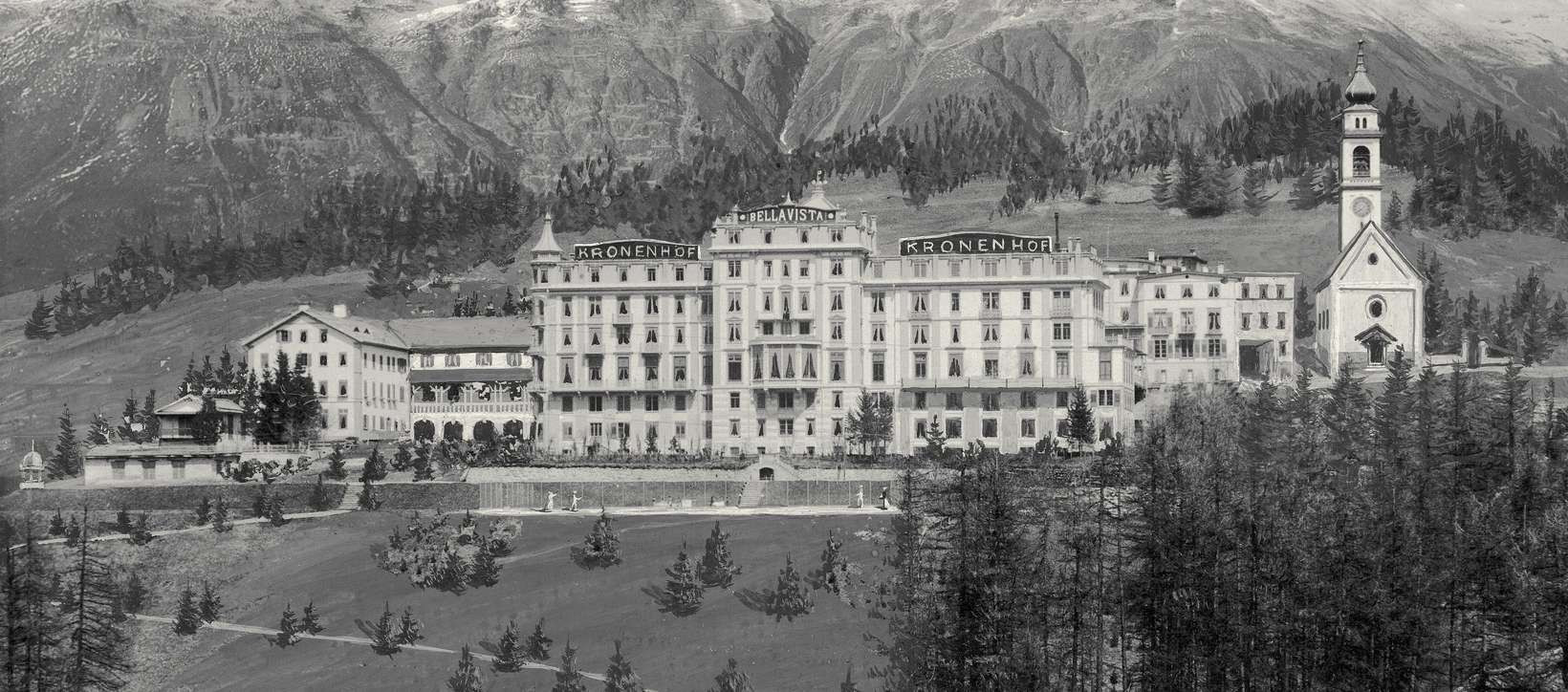 "Grand" Hotel Kronenhof: note the tennis courts in front.
"Grand" Hotel Kronenhof: note the tennis courts in front.
At the end of the 19 century, hotels designed to become homes away from home, were built. They duly contained a reading room, a cards room, the fireplace and the library. The primary aim was to please the distinguished traveller and give him the proverbal "home away from home". With greatest care, necessities and styles of foreigners were copied, sometimes merciless merged with the afore-mentioned cuckoo clock style of architecture.
Traditionally the owning couple of the Gredig family ran the Kronenhof. Around 2000, the large family sold the hotel. Managers took the helm of this Swiss institution; Henry Hunold followed Xaver Stocker - all hoteliers in the great Swiss tradition. Recently a guest remark reached us: 'The manager attended each meal and made a point of coming around to each table to make sure you were well taken care of. I have never, EVER been to a hotel before where the people were so incredibly eager to please and the service was impeccable.'
Later, a managing couple was at the helm of the house. With ample experience in deluxe hotels, Heinz E. and Jenny Hunkeler are leading the hotel through its most remarkable renovation phase. A spa wonderland has been added. New rooms, apartments and an underground car park have been completed.

